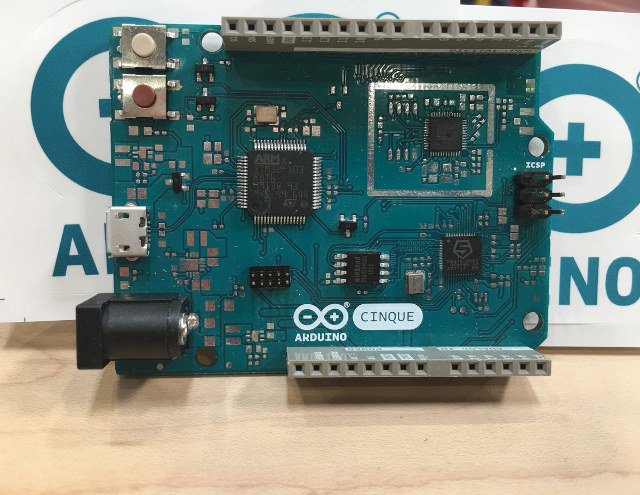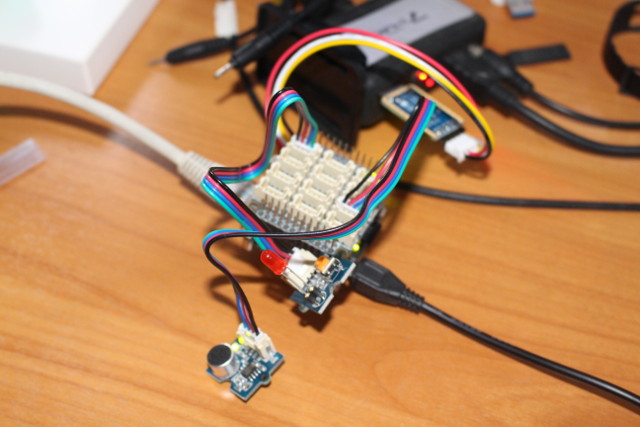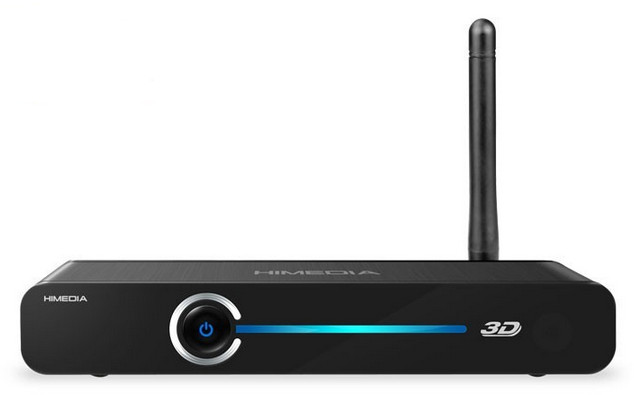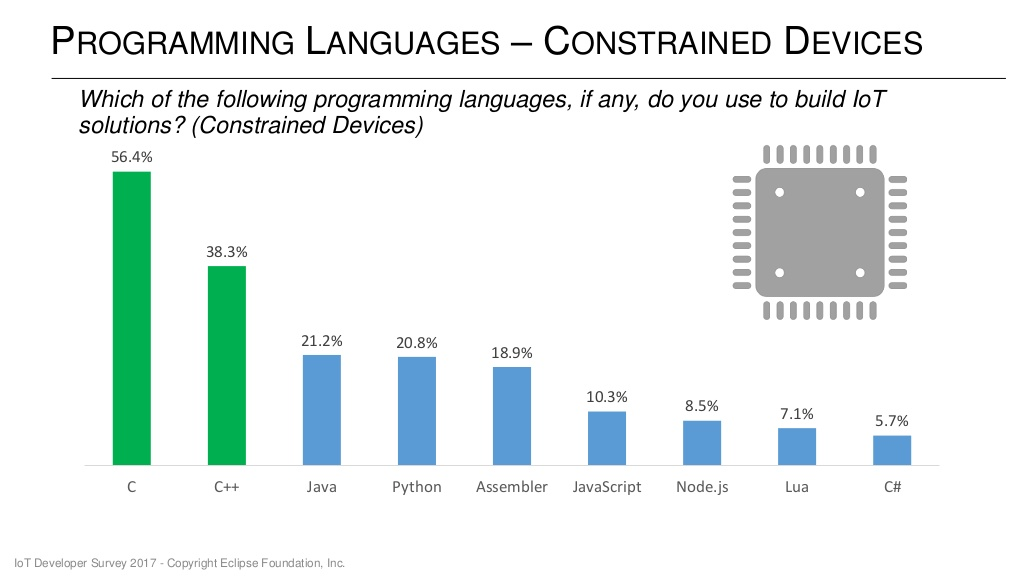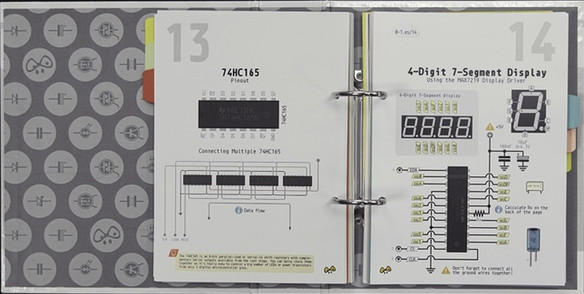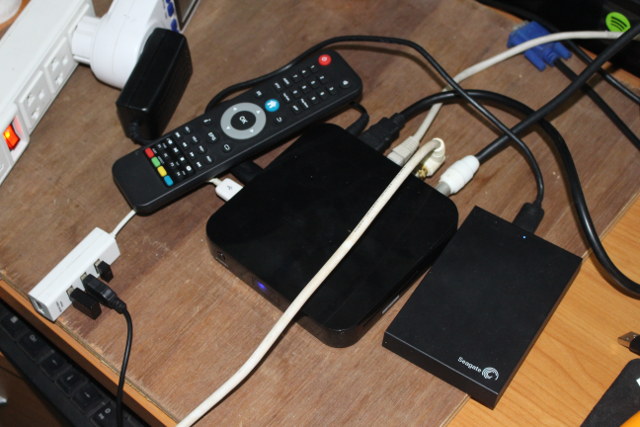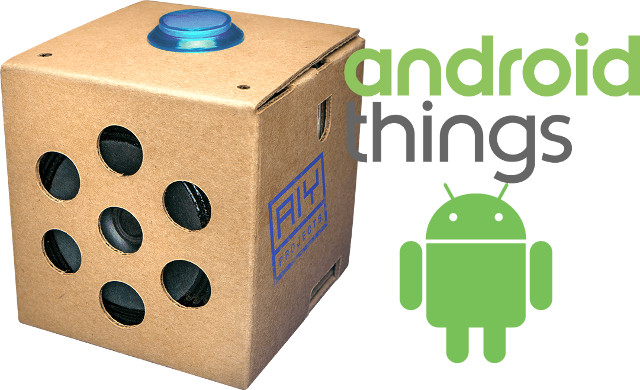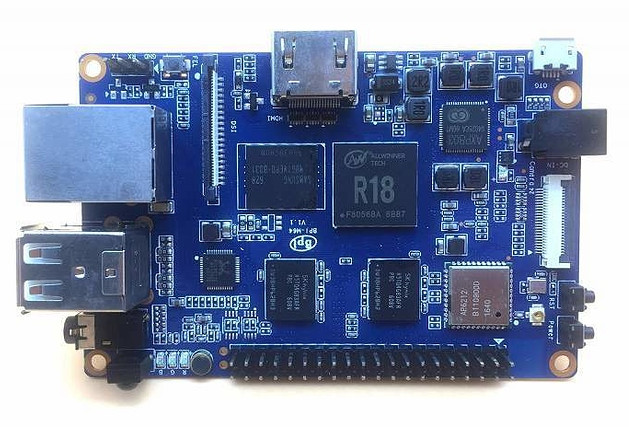SiFive introduced the first Arduino compatible board based on RISC-V processor late last year with HiFive1 development board powered by Freedom E310 MCU, but the company has been working with Arduino directly on Arduino Cinque board equipped with SiFive Freedom E310 processor, ESP32 for WiFi and Bluetooth, and an STM32 ARM MCU to handle programming. Few other technical details have been provided for the new board, but since it looks so similar to HiFive1, I’ve come with up with preliminary/tentative Arduino Cinque specifications: MCU – SiFive Freedom E310 (FE310) 32-bit RV32IMAC processor @ up to 320+ MHz (1.61 DMIPS/MHz) WiSoC – Espressif ESP32 for WiFi and Bluetooth 4.2 LE Storage – 32-Mbit SPI flash I/Os 19x Digital I/O Pins 19x external interrupt pins 1x external wakeup pin 9x PWM pins 1/3 SPI Controllers/HW CS Pins I/O Voltages – 3.3V or 5V supported USB – 1x micro USB port for power, […]
Using GPIOs on NanoPi NEO 2 Board with BakeBit Starter Kit
NanoPi NEO 2 is a tiny 64-bit ARM development board powered by Allwinner H5 processor. FriendlyELEC sent me a couple of NEO 2 samples together with their BakeBit Start Kit with a NanoHat and various modules via GPIOs, analog input or I2C. I’ve already tested both Armbian with Linux 4.11 and Ubuntu Core Qt with Linux 3.10, and ran a few benchmarks on NanoPi NEO 2. You would normally prefer to use the Armbian image with Linux mainline since it provided better performance, but at the time I was told GPIO support was not there. Configuring NanoPi NEO 2 board with BakeBit library So this week-end, when I decided to test GPIO support and BakeBit Starter Kit, I decided to follow this advice, especially nanopi-neo2-ubuntu-core-qte-sd4g-20170329.img.zip image is still the recommended one in the Wiki. So I went with that image. I’ll use Python examples from Bakebit library, but if you […]
HiMedia Q30 TV Box is Powered by HiSilicon Hi3798M V200 Processor
HiSilicon Hi3798M V200 processor is a cost-down version of Hi3798C V200 processor with a cheaper Mali-450MP GPU, a single Gigabit Ethernet MAC, a single USB 3.0 port shared with SATA and PCIe interface. One of the first devices with the processor will be Himedia Q30 TV box based on Himedia Q3 design. HiMedia Q30 specifications: SoC – HiSilicon Hi3798M V200 quad-core ARM Cortex A53 processor with an ARM Mali-450MP GPU supporting OpenGL ES2.0/1.1, OpenVG1.1, EGL, and System Memory – 2 GB DDR3 Storage – 8 GB eMMC flash, SD card slot Video Output – 1x HDMI 2.0a up to 4K @ 60 Hz, 1x composite video (RCA); Imprex 2.0 PQ engine with support for HDR/HLG/SLF/HDR to SDR, BT.709, and BT.2020 Audio Output – HDMI, stereo audio (RCA), optical S/PDIF port Video Engine – HiVXE 2.0 with support for HEVC 10-bit 4Kx2K @ 60 fps, H.264 4K2K @ 30 fps Connectivity […]
Top Programming Languages & Operating Systems for the Internet of Things
The Eclipse foundation has recently done its IoT Developer Survey answered by 713 developers, where they asked IoT programming languages, cloud platforms, IoT operating systems, messaging protocols (MQTT, HTTP), IoT hardware architectures and more. The results have now been published. So let’s have a look at some of the slides, especially with regards to programming languages and operating systems bearing in mind that IoT is a general terms that may apply to sensors, gateways and the cloud, so the survey correctly separated languages for different segments of the IoT ecosystem. C and C++ are still the preferred languages for constrained devices, and developers are normally using more than one language as the total is well over 100%. IoT gateways are more powerful and resourceful (memory/storage) hardware, so it’s no surprise higher level languages like Java and Python join C and C++, with Java being the most used language with 40.8% […]
ABC: Basic Connections is a Book Listing Common Circuit Diagrams for Arduino Boards (Crowdfunding)
PighiXXX is known for their very useful and pretty pinout diagrams, but they’ve now created a book called “ABC: Basic Connections” comprised of a collection of easy to read circuit diagrams that shows you how to connect various circuits to your Arduino compatible board. The book is in file folder format, so you can easily remove the sheets you need during your project. While you can normally find pretty much whatever circuits you need on the Internet, ABC book’s diagrams looks very neat, and since it comes with 100 A5 pages of circuit diagrams such as LEDs, decoders, shift registers, 7-segment displays, mux/demux, light bulbs, DC motors, solenoids, relays and so on, you may discover circuits you did not know you needed. Every page of the book also comes with a 0-1.es/xx short URL redirecting to an online tutorial for the circuit with information about the theory, component list, tips, […]
Sen5 Amlogic S905D TV Box Review – Part 2: Android Firmware, Kodi 17, and DVB-T2 & S2 App
Sen5 is one of the first Android TV boxes powered by Amlogic S905D processor, and comes with two tuners (DVB-C/T/T2 and DVB-T/T2) with two demodulators that should allow for recording on one tuner, while watching the other, or recording two channels at the same time. We’ve already check out the hardware in the first part of the review, and seen a glimpse of the neat user interface, so today I’ll report about my experience with the device. Sen5 Android Set-Top Box First Boot, Setup Wizard, & First Impressions The STB comes with two USB ports so I used one for the hard drive, a necessity if you plan to use the PVR function, and connected a USB hub to the other with RF dongles for an air mouse and a gamepad, as well as a USB keyboard to take screenshots. I also connected Ethernet and HDMI cables, as well as […]
Android Things Developer Preview 4 Released with Google Assistant SDK Support
Earlier this month, Google released a preview of the Google Assistant SDK that works on boards running Debian like the Raspberry Pi 3, and even launched AIY Project Voice Kit for the later. You can now play with Google Assistant on Android Things as the company has just released Android Things Developer Preview 4 with support for Google Assistant SDK. The operating systems works on any Android Things certified devices, but the example instructions for Google Assistant API on Android Things also include steps to use Raspberry Pi 3 board together with AIY Projects Voice kit. The developer preview 4 also adds I2S to the peripheral I/O API and is demonstrated in the aforementioned example, and new hardware support with NXP i.MX7D based Pico Board equipped WiFi & Bluetooth, Ethernet, USB ports, an audio jack, and an I/O expansion port. Android Things DP4 also brings the ability for developers to […]
Banana Pi BPI-M64 Board Gets Allwinner R18 Processor with Google Cloud IoT Core Support
Banana Pi BPI-M64 board was launched with Allwinner A64 processor, but a few days ago, I noticed the board got an option for Allwinner R18. Both processors are likely very similar since they are pin-to-pin compatible, and Pine64 was first seen with Allwinner R18, so I did not really feel it was newsworthy. But today, Google announced Google Cloud IoT Core cloud service working with a few app partners such as Helium and Losant, as well as several device partners including ARM, Marvell, Microchip, Mongoose OS, NXP… and Allwinner, having just announced the release of an Allwinner R18 SDK with libraries supporting Google Cloud IoT Core. Let’s go through the board specifications first which are exactly the same as for the original BPI-M64 board, except for the processor: SoC – Allwinner R18 quad core ARM Cortex A53 processor with Mali-400MP2 GPU System Memory – 2GB DDR3 Storage – 8GB eMMC […]


